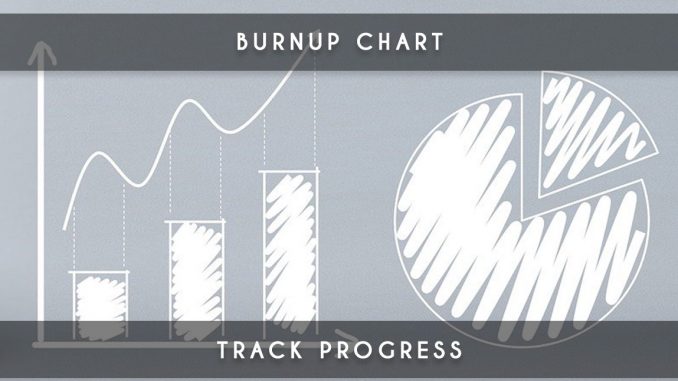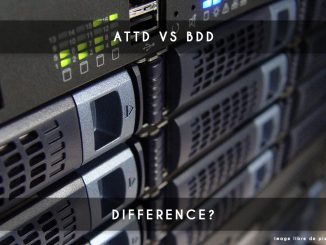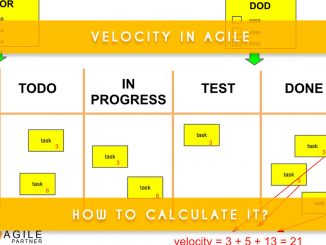
There is a Scrum chart that is used to track the progress of a project as a whole: the Burnup Chart. We will see how to use it and what it can allow us to analyze.
For newcomers to the Agile world, be aware that this graphic is regularly used in Scrum projects.
What is the Burnup Chart?
The Burnup Chart is a graph that allows you to analyze the progress of the work “done” in relation to the overall planned project.
On the vertical axis, we count the sumr of story points and on the horizontal axis each iteration. Some teams will prefer to put the number of items in vertical axis instead of the story points.
On this graph, we have a first red curve representing the sum of the story points of the items “done” at the end of each iteration. We have a second blue curve representing the sum of the story points of all the items in the backlog.
Caution, to do this, it is necessary to privilege a quick estimate like the Extreme Quotation or the Bucket System. Do not write all the items in advance.

As you can understand, the red curve can never go down because a finished job no longer changes state.
In general we update our Burndup Chart at the end of Sprint.
Burnup chart: the revealing blue curve
The blue curve is often indicative of a number of things and sometimes its tendency can surprise people.
I have not written this article to say what is good or bad (at the level of agile practices) but to understand what we can infer from tracking with a Burnup Chart.
A downward curve on your burnup chart?
Some will shout “scandal”, others will say that everything is possible; however in a few cases we could see the blue curve go down back on Burnup Chart. Why ?
If this case is very rare, sometimes the teams make the decision to clean the backlog because some companies use the backlog like a large box idea that can never be fully realized; for example, a backlog that is not dedicated to a particular project (bad practice). However, the trend is still on the rise in most cases.
In general we decide to do this great cleaning when the blue curve rises constantly faster than the red curve; we are at this moment in a frequent phenomenon where requests flow faster than the capacity to produce.
When we make the decision for a big spring cleanup, we can realize that some ideas are obsolete and others will just never be realized. To get rid of these items.
Is Burnup chart an Agility indicator?
This blue curve is really revealing of many things. If the blue curve is completely horizontal, we could worry about the agility of the project.
An agile project is a project that increments each iteration and improves day or day. So if the blue curve is horizontal, it means that the project remains the same from beginning to end and that it is not agile.
A curve that goes up at once on the burnup chart
This case is not always alarming. It can indicate many phenomena not systematically so negative:
- the team makes an absolute quotation of 50 new items (not optimal)
- the team only gets feedback too rarely (negative)
It is often useful to quickly estimate incoming items in order to prioritize the value as much as possible; however, the product owner will not do it systematically if he thinks the feedbacks are interesting but have few values.
Conclusion burnup chart
To conclude on the burnup chart. Relatively simple to maintain, the Burnup Chart is a good indicator for tracking a project over time. Don’t hesitate to put it on the wall and make it evolve by hand (visual management).
Do you make burnup charts in your teams? Do you have tips to share on the burnup chart?
Helpful Info: sometimes we write burn up chart with a space (burnup chart)
Useful link: Burnup Chart : suivi de projets (french)




1 Trackback / Pingback